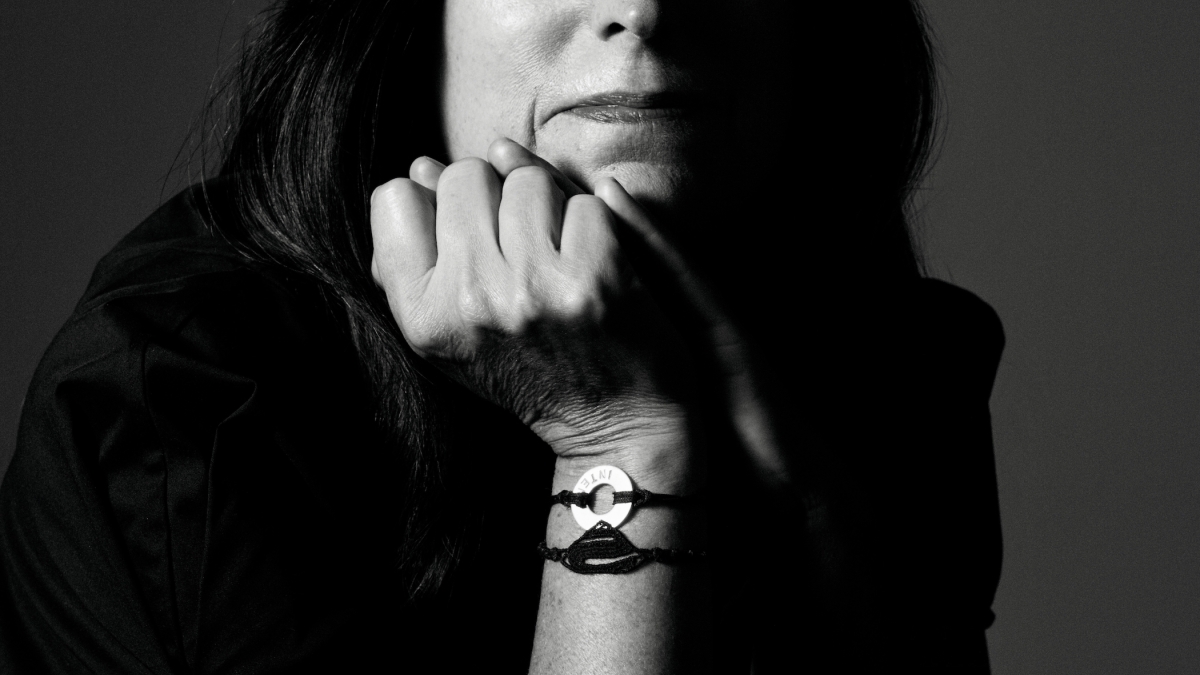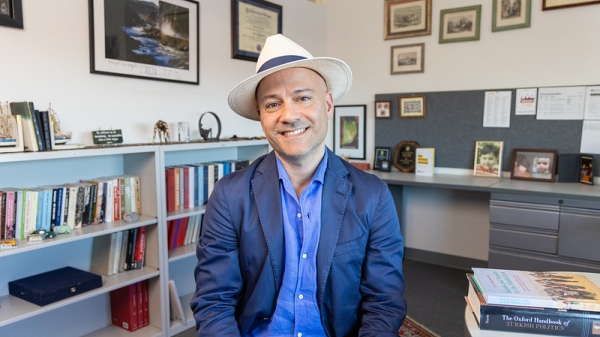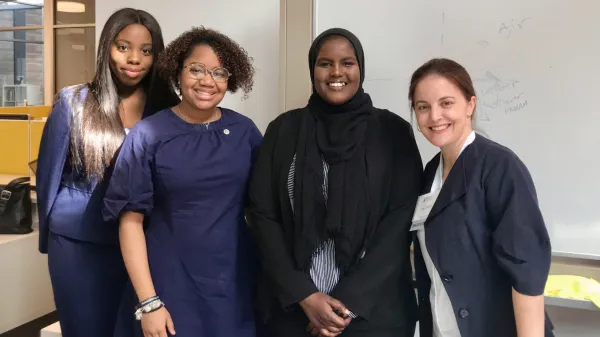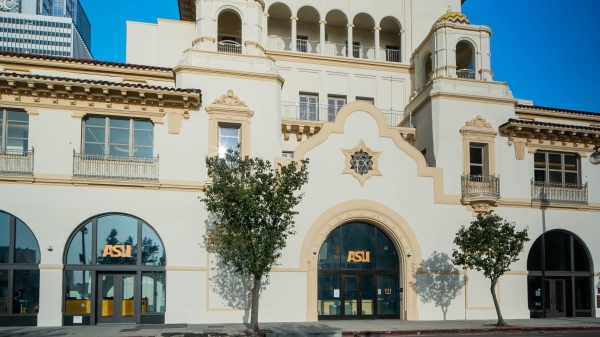‘Godmother of virtual reality’ joins ASU to build new L.A.-based program, center

Nonny de la Peña is a leader in immersive journalism, a field that she is widely credited with establishing. Photo courtesy of Nonny de la Peña.
Nonny de la Peña, dubbed the "Godmother of Virtual Reality” by Forbes and the Guardian, is joining Arizona State University to design and lead a new graduate program and center in emerging media and narrative based in Los Angeles.
Steven J. Tepper, dean of the Herberger Institute for Design and the Arts, said that de la Peña’s new role at ASU is the result of a challenge that ASU President Michael Crow issued jointly to the Herberger Institute and the Walter Cronkite School of Journalism and Mass Communication: to imagine bringing something impactful and distinctive to the global capital of entertainment and storytelling, given the legacy of the Herald Examiner building as a center for media and storytelling and the activation of The Sidney Poitier New American Film School.
“There’s a convergence in journalism and film and other forms of storytelling,” Tepper said, “and so the question was, could we design something that would be innovative?”
Enter de la Peña.
A New American Fellow, Yale Poynter Media Fellow and former correspondent for Newsweek, de la Peña is a leader in immersive journalism, a field that she is widely credited with establishing. Her paper in the MIT journal Presence, “Immersive Journalism: Immersive Virtual Reality for the First-Person Experience of the News,” is the second most downloaded article in the journal’s history. She was named WSJ Technology Innovator of the Year in 2018 and one of CNET en Español’s 20 most influential Latinos for her groundbreaking work, and her TEDWomen talk, which describes the use of cutting-edge technologies for creating intense and empathic engagement on the part of viewers, has garnered upward of 1,300,000 views. The piece “Hunger in Los Angeles,” on which she collaborated, became the first VR piece ever shown at Sundance and inspired Wired Magazine to nominate her a “#MakeTechHuman Agent of Change.”
“Technology has the power to put people in the story, so they remember it with their body, not just their mind,” de la Peña said. “I’m joining ASU to build a program and a center in emerging media and narrative because I want to shift the demographics of who’s creating and using these new technologies. This new form of storytelling can offer a visceral and positive impact on our perception of the world, and we want the center to be a place that takes advantage of that potential while supporting anyone who wants to harness these creation tools to tell their own stories.”
“Nonny de la Peña’s fusion of gaming technologies with journalism is the most significant advancement in news since television in the 1950s. She’s a game-changer,” said Dianah Wynter, inaugural director of The Sidney Poitier New American Film School. “Collaborating with Nonny and (the Cronkite School) to build a center for our interactive programs will give students the opportunity to enhance their training in filmmaking, screenwriting and VFX with emerging trends in VR, MR and XR.”
De la Peña is tasked with tying the work in emerging media and narrative into programming and curriculum at ASU at Mesa City Center, a 118,000-square-foot facility that will open in downtown Mesa in fall 2022 and serve as a home for the film school as well as for new interdisciplinary degree programs based in extended reality and immersive media.
De la Peña’s appointment is in both the Herberger Institute and the Cronkite School, and the L.A.-based program and center will be a collaborative effort between the two.
“Nonny de la Peña’s work is all about telling stories in new ways that help us better understand our world and each other,” said Kristin Gilger, interim dean of the Cronkite School. “This partnership with the Herberger Institute will give our students the opportunity to augment the skills they’ve acquired as journalists with powerful new approaches in technology and storytelling.”
De la Peña is the founder and CEO of Emblematic Group, a digital media company focused on immersive virtual, mixed and augmented reality. She earned a BA in sociology and visual and environmental studies from Harvard University, an MA in online communities from the Annenberg School for Communication and Journalism at the University of Southern California, and a PhD in media arts and practice from the USC School of Cinematic Arts.
Update: Due to family reasons, Dianah Wynter did not take the position of director of The Sidney Poitier New American Film School. On Nov. 16, 2021, Cheryl Boone Isaacs was announced as the founding director of the school.
More Law, journalism and politics

School of Politics and Global Studies director's new book explores mass violence
Why do people commit atrocities and why are certain groups, including religious and ethnic, more vulnerable to large-scale…

ASU faculty contributing to improvement of Wikipedia
Many academics have a love-hate relationship with Wikipedia. While the website has information about almost anything you can…

ASU Law students gain vital experience through Los Angeles location
Students at the Sandra Day O’Connor College of Law at Arizona State University may be concentrated in the school’s downtown…